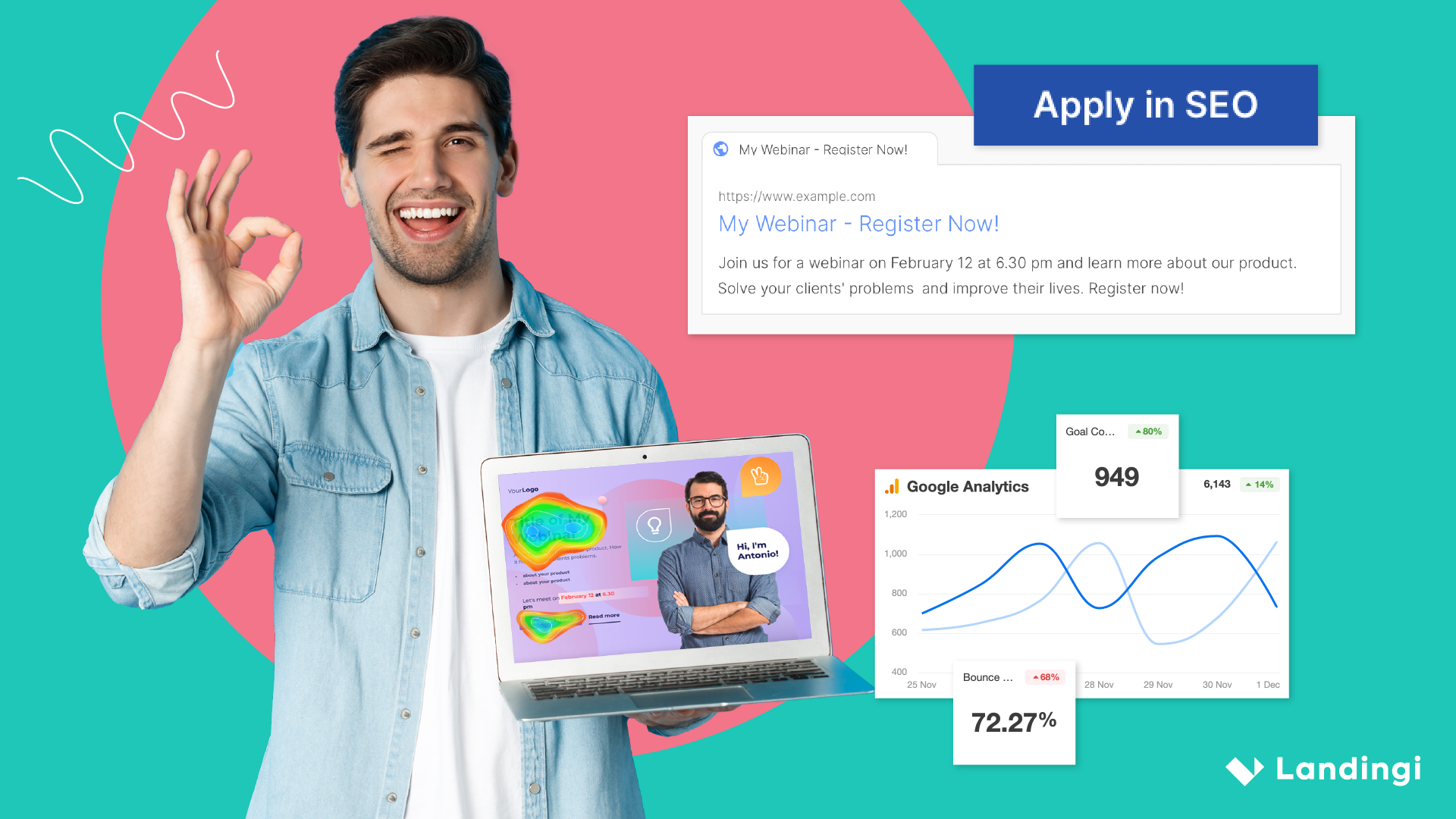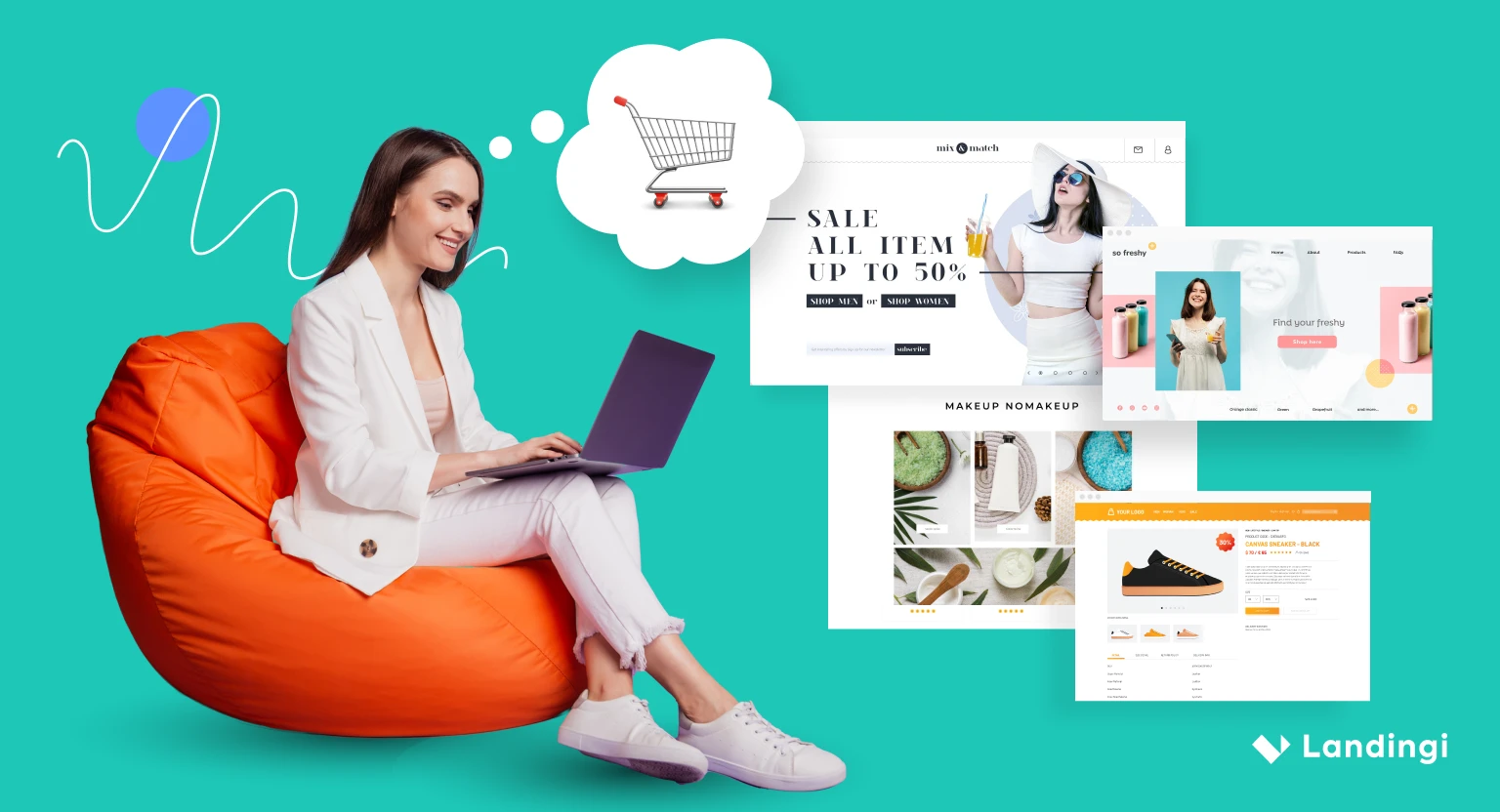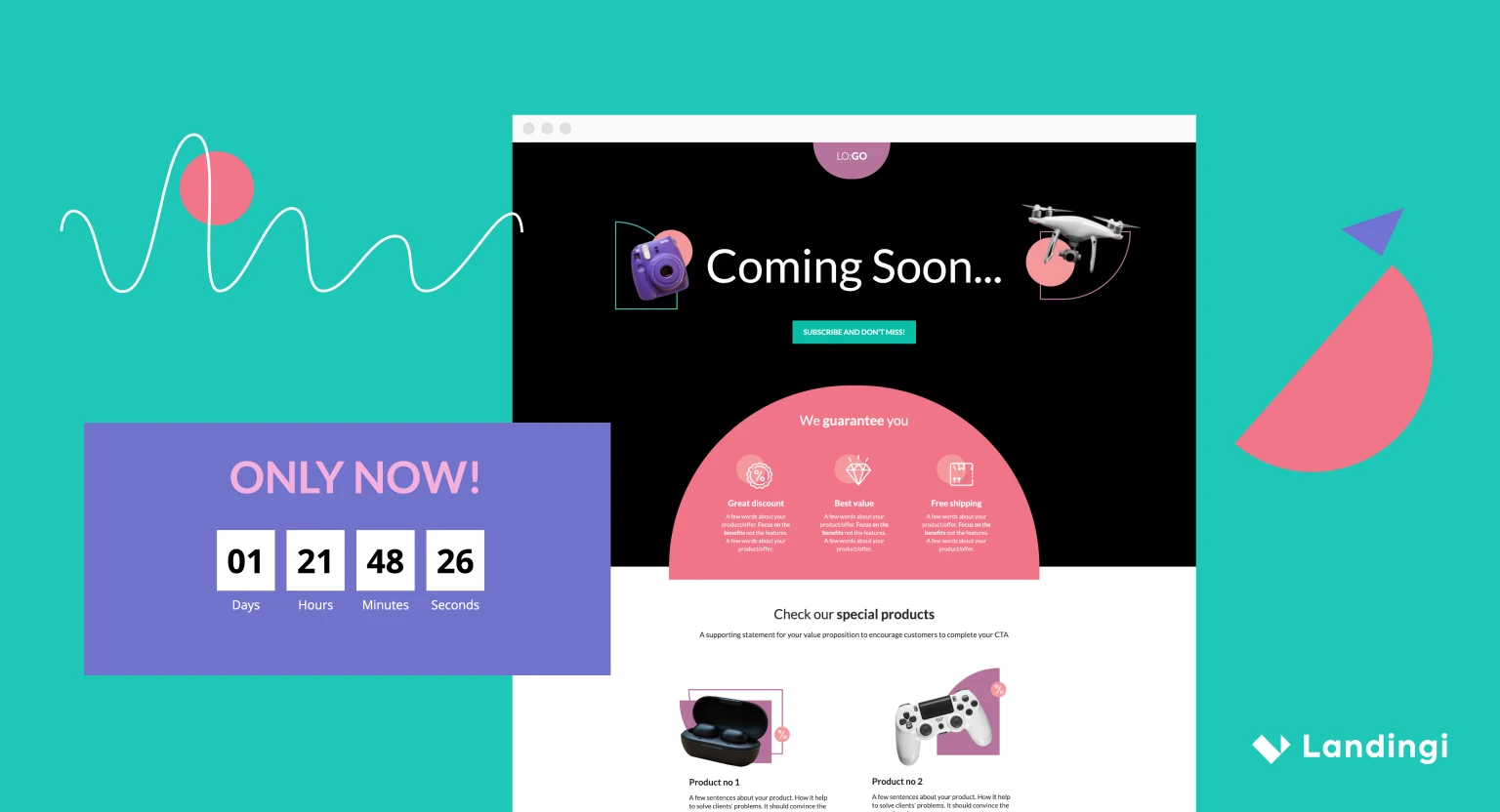The B2B customer acquisition process is the lifeblood of any business-to-business company. It’s the systematic, ongoing effort to attract, engage, and convert qualified leads into loyal customers. While the basic definition is straightforward – bringing new customers into your fold – the “how” is what separates success from stagnation.
While B2B digital marketing is dynamic and still evolving, traditional methods might not be enough. Reaching high-value clients requires a multi-faceted approach that caters to changing customer behavior and leverages the power of digital tools.
This article explores seven effective B2B customer acquisition strategies that equip marketers with the tools they need to thrive. We delve into strategies like targeted content marketing, social media engagement, and the power of paid advertising, all designed to build brand awareness, generate qualified leads, and ultimately drive sustainable growth for your B2B business. This article equips you not only with the strategic know-how but also the practical tool to take your B2B marketing to the next level – Landingi. Let’s dive in!
- Multi-Channel Lead Generation
- Targeted Content Marketing
- Strategic Social Media Engagement
- Inbound Marketing
- SEO Marketing
- Account-Based Marketing (ABM)
- Paid Advertising
Harness the power of AI to generate copy, edit images, and improve SEO. All within a single platform.
Save time and get one step closer to perfection.
What Is B2B Customer Acquisition?
B2B customer acquisition is a combination of techniques and/or tools used for acquiring new B2B clients. As a process, it involves identifying, targeting, and securing new clients who are other businesses rather than individual consumers. B2B customer acquisition requires incorporating strategic marketing and sales activities designed to attract potential business clients, nurture them through the sales funnel, and ultimately convert them into loyal customers.
A key point you should bear in mind while choosing and then working out your strategy is target audience identification. To formulate a well-targeted strategy, you should first and foremost ask yourself who your potential customers are, what they are looking for, and how your product or service may satisfy their needs.
To address all these questions, you will probably have to build up a persona (or personas, if you target various groups). Simply put, it’s the client type your company is going to reach with a specific offer. It consists of essential characteristics, such as their average income, position, localization, demographic and psychological profile, hobbies, interests, and everything that makes your understanding of their behavior more proper or accurate.
In marketing, it is assumed that an acquisition strategy should be fitted to the precisely determined audience. Yet, the B2B customer acquisition process is a completely different kettle of fish than gaining B2C clients. In the B2B context, customer acquisition typically requires a more complex and relationship-driven approach than B2C (business-to-consumer) markets. The decision-making process is often longer and involves multiple stakeholders. Key strategies for B2B customer acquisition include content marketing, search engine optimization (SEO), social media marketing, email marketing, and personalized sales outreach. Businesses can build a robust pipeline of qualified leads and drive sustainable growth by effectively leveraging these tactics.
What Is B2B Customer Acquisition Strategy?
A B2B customer acquisition strategy is a comprehensive plan businesses use to attract and convert other businesses into customers. This strategy involves a combination of marketing and sales techniques tailored to business clients’ unique needs and behaviors. An effective B2B customer acquisition strategy typically encompasses key components as follows:
- Target market identification – clearly defining the ideal customer profile (ICP) and understanding the target market’s needs, pain points, and decision-making processes.
- Content marketing – creating valuable, informative content such as blog posts, whitepapers, case studies, and webinars that address the specific challenges and interests of the target audience.
- Search engine optimization (SEO) – optimizing the website and content to rank higher in search engine results, making it easier for potential clients to find the business online.
- Social media marketing – leveraging platforms like LinkedIn, Twitter, and Facebook to engage with potential clients, share industry insights, and promote content.
- Email marketing – building and nurturing relationships with potential clients through targeted email campaigns that offer personalized content and calls to action.
- Paid advertising – utilizing pay-per-click (PPC) advertising, including display and social media ads, to reach a broader audience and drive traffic to landing pages and the company website.
- Lead generation and nurturing – implementing tools and tactics to capture leads, such as gated content, free trials, and contact forms, and nurturing these leads through the sales funnel with personalized follow-ups and relevant content.
- Sales outreach – equipping the sales team with the necessary tools and information to conduct effective outreach, including cold emails, phone calls, and personalized demos.
- Performance tracking – continuously monitoring and analyzing the performance of various acquisition tactics to optimize the strategy, using metrics such as conversion rates, customer acquisition costs (CAC), and return on investment (ROI).
By integrating these components into a cohesive strategy, businesses can systematically attract, engage, and convert high-quality leads, driving growth and success in the B2B marketplace.
What Is an Effective B2B Customer Acquisition Strategy?
An effective B2B customer acquisition strategy involves the synergistic interplay of 5 critical elements: relevance, flexibility, diversification, scalability, and persistency. When these elements align, they create a powerful framework for attracting and retaining business clients.
#1 Relevance – Aligning Value Proposition with Evolving Needs
Relevance is the foundation of any customer acquisition strategy’s effectiveness. This entails deeply understanding your target market’s challenges and aspirations. You can tailor your value proposition to address their specific pain points by conducting thorough market research and customer segmentation. This ensures that your offerings resonate with potential clients, establishing you as a provider of solutions, not just products or services.
#2 Flexibility – Adapting to Shifting Buyer Behaviors
Flexibility is key to navigating this dynamic environment. The B2B market is characterized by constant evolution. Buyer personas, purchasing habits, and technological advancements all influence decision-making processes. Your acquisition strategy should be adaptable, allowing you to incorporate new trends and adjust tactics. This agility ensures you remain competitive and continue to attract high-quality leads by aligning your approach with their evolving preferences.
#3 Diversification – Expanding Reach Through Multi-Channel Engagement
Diversification involves utilizing a strategic mix of marketing and sales channels to reach a broader audience. B2B buyers consume information through diverse channels, and a successful acquisition strategy embraces this. This could include content marketing, search engine optimization (SEO), social media marketing, targeted email campaigns, and even pay-per-click advertising. By leveraging a multi-channel approach, you can ensure your message reaches potential customers at various touchpoints within their buying journey.
#4 Scalability – Gearing Up for Exponential Growth
Scalability refers to the ability of your tactics to accommodate a growing demand for your offerings. As your B2B business grows, your customer acquisition strategy must keep pace with it. This might involve investing in marketing automation tools or building a robust lead nurturing program. The chosen methods should be able to handle increasing lead volume without compromising efficiency or personalization in your outreach efforts.
#5 Persistence – Cultivating Long-Term Relationships
Persistence is essential for nurturing leads and fostering long-term relationships. Customer acquisition in the B2B world is a marathon, not a sprint. This involves consistent communication, providing valuable content that addresses their needs, and demonstrating expertise throughout the buying process. Persistence also requires ongoing refinement of your strategies based on data and customer feedback. This ensures that your acquisition efforts remain optimized and deliver the highest return on investment.
7 Best B2B Customer Acquisition Strategies
The best B2B customer acquisition strategies involve marketing channels designed to reach your target audience, such as lead generation, content marketing, social media marketing, inbound marketing, SEO marketing, account-based marketing, and paid advertising. Check out the 7 best B2B customer acquisition strategies and find out what makes them effective – the goal is to educate potential customers on how your business can solve their problems, turn them into leads, and build long-term customer relationships.
1. Multi-Channel Lead Generation
The first best B2B customer acquisition strategy is multi-channel lead generation. This strategy includes improving your lead generation process to increase the number of prospects (especially once you create a sales funnel). Use a combination of tactics such as downloadable content (e.g., ebooks, reports), targeted email campaigns, and webinars to attract valuable leads. For each purpose, create a lead-generation landing page focused on a single goal and leverage its power to achieve high conversion rates. Implementing the lead generation process allows you to get to know your target audience and tailor your offer to their needs.
These days, there are many possibilities for lead generation, such as creating meaningful content, implementing an email marketing strategy, or promoting relevant content on your social media channels. Moreover, you shouldn’t miss out on lead scoring (assigning value to each lead based on the probability of engaging with a business), as it allows you to prioritize your efforts on the leads that are most likely to purchase and thus turn them into your customers more carefree and rapidly.
One example of lead generation is using landing pages or pop-ups with a signup form. Both options are more effective than including a box in the sea of content on a website. However, landing pages are considered a better choice of the two since some users see pop-ups as annoying.

With the right tools, such as Landingi – the best digital marketing platform for creating, testing, and optimizing landing pages, you can create pages focused on a single goal that will be your perfect lead-generation machine. A well-designed landing page directs users through engaging and persuasive content to an outstanding CTA, encouraging them to leave their contact details in exchange for your value offer.
2. Targeted Content Marketing
The second best B2B customer acquisition strategy is targeted content marketing, providing potential customers with information. This approach fosters trust and respect before any sales proposition is presented. By prioritizing informative content, B2B companies can establish themselves as thought leaders and trusted advisors within their industry. This educational approach empowers potential clients to make informed decisions, fostering long-term trust and brand loyalty.
By consistently providing valuable, insightful content that addresses the specific challenges faced by your target audience, you establish your company as a credible source of knowledge and expertise. Offering educational and marketing materials in the form of informative content without a direct sales pitch demonstrates a genuine commitment to educating and empowering your potential customers. B2B customer acquisition strategies include content marketing because it fosters trust and positions businesses as reliable partners, not just product or service providers.
Moreover, educational content empowers potential clients to make informed decisions. They better understand their industry challenges and how your solutions can address them. This fosters a sense of control and builds trust in your company’s ability to deliver value.
Content marketing allows you to snag your audience’s attention, direct them to your website, and let them explore your business and offer. In order to make the best out of it, you should follow the content marketing cycle:
- create buying personas,
- map the most relevant content for each buyer persona,
- create content (various types – videos, blog posts, webinars, etc.),
- plan content marketing campaigns,
- measure the results,
- recycle the content to revive the topic after some time.
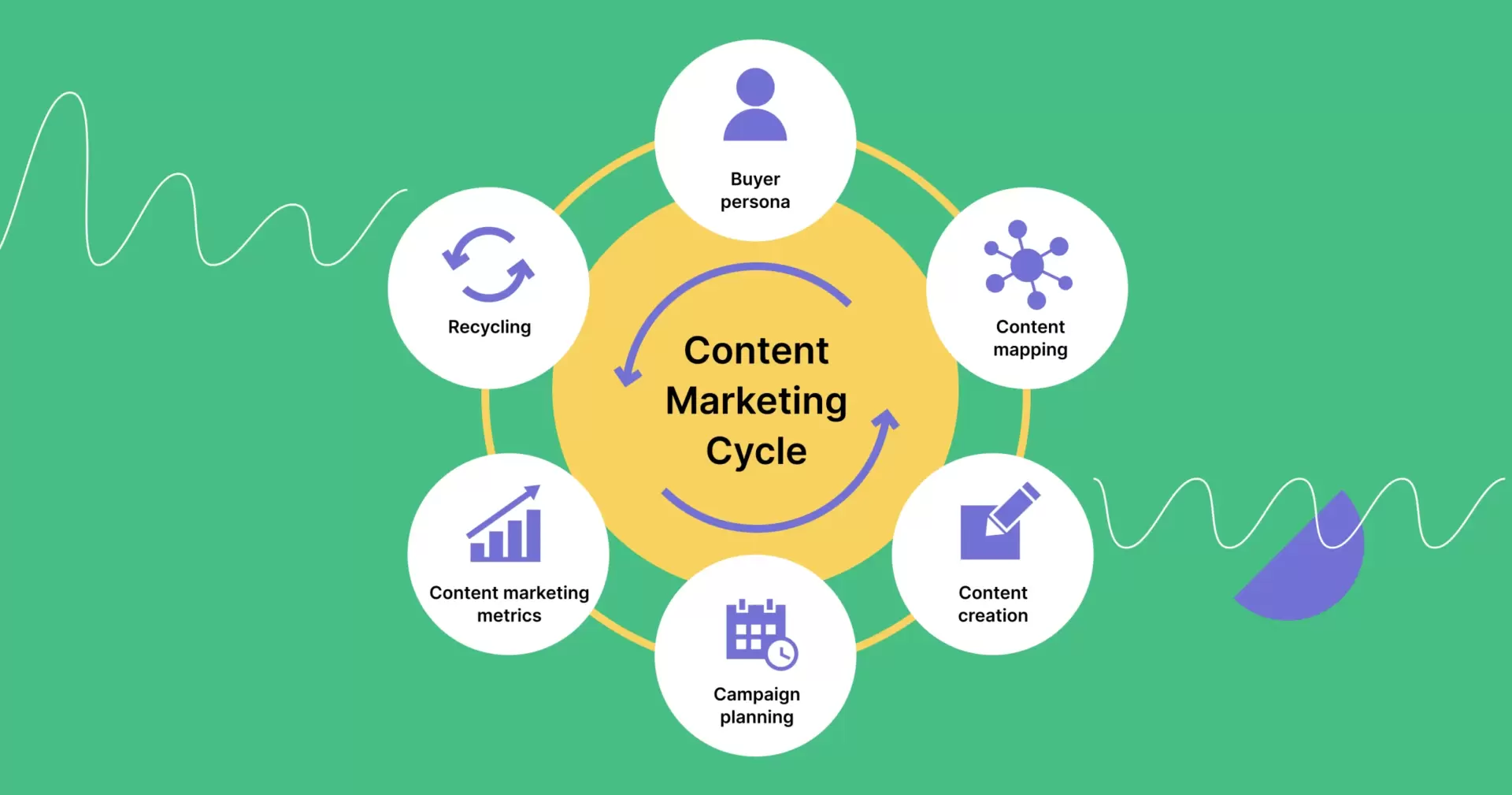
3. Strategic Social Media Engagement
The third best B2B customer acquisition strategy is strategic social media engagement. This approach goes beyond simply maintaining a social media presence; it involves a well-defined plan to leverage these platforms to amplify brand awareness, nurture relationships, and ultimately generate high-quality leads.
B2B customer acquisition strategies involve social media marketing mostly because social media platforms offer sophisticated targeting options, allowing businesses to reach a highly focused audience with content tailored to their needs and interests. This ensures your message resonates with the most relevant potential customers. By actively engaging in industry discussions, sharing valuable insights, and participating in relevant online communities, you can establish your company as a thought leader within your field. This positions you as a trusted resource and attracts potential customers seeking solutions to their challenges.
Social media fosters two-way communication, allowing you to connect with potential customers more personally. By responding to comments and questions, providing ongoing support, and demonstrating genuine interest in their needs, you build trust and nurture relationships that can lead to future business opportunities.
Social media platforms can also be leveraged to capture valuable leads by running targeted ad campaigns, offering downloadable content in exchange for contact information, or hosting engaging webinars and events on the platform.
By implementing a strategic social media engagement strategy, B2B companies can expand their reach, build brand awareness, and cultivate meaningful connections with potential customers. These nurtured relationships ultimately translate into a stronger pipeline of qualified leads and sustained growth for the organization.
4. Inbound Marketing
The fourth best B2B customer acquisition strategy is inbound marketing. This methodology transcends traditional outbound tactics, where unsolicited messages are pushed toward potential customers. Instead, inbound marketing focuses on attracting qualified leads actively seeking solutions like yours. It’s one of the most effective methods of winning new B2B clients. These clients frequently tend to be higher-intent, as they have already researched and are looking into your offers.
B2B customer acquisition strategies focus on providing value. By creating high-quality content (e.g., blog posts, white papers, case studies) that addresses the specific challenges faced by your target audience, you attract potential customers and provide real value for those who are already interested in your industry and solutions. This ensures your message resonates with those actively researching and evaluating potential vendors. Inbound marketing leverages automation tools to nurture leads throughout the buying journey. This involves providing valuable content that addresses their specific needs at each stage, from initial awareness to consideration and decision-making. Targeted nurturing fosters trust and positions your company as the preferred solution provider.
By implementing a well-defined inbound marketing strategy, B2B companies can attract high-quality leads, nurture them into loyal customers, and achieve sustainable growth. It’s a strategic approach that focuses on attracting the right customers at the right time, leading to a more effective customer acquisition process.
5. SEO Marketing
The fifth best B2B customer acquisition strategy is SEO marketing. Leads coming from organic search frequently turn out to be more valuable than those coming from business directories. Keeping this in mind, you should find out what your potential B2B customers search for. Then, you will be able to improve your SEO to appear higher in the rankings and make your business easy to find. Yet, this approach goes beyond simply ranking high in search results; it involves strategically optimizing your website and content to ensure they are discoverable by potential customers searching for solutions related to your offerings.
B2B customer acquisition strategies aim to build trust and credibility, and for that, SEO is one of the most appreciated marketing strategies. The power of SEO in B2B customer acquisition lies in its ability to provide increased organic visibility, targeted audience reach, increased credibility and trust, and well-performing qualified lead generation. By optimizing your website and content for relevant keywords, you increase the likelihood of your company appearing at the top of SERPs for queries related to your industry and solutions. This significantly enhances your visibility to potential customers actively researching online.
Effective SEO goes beyond generic keywords. Incorporating long-tail keywords that reflect specific customer pain points and buying intent ensures your website reaches the most relevant B2B audience actively searching for solutions like yours. It maximizes the return on your SEO investment. By attracting high-intent B2B customers actively searching for solutions, SEO generates qualified leads already engaged in the buying journey. This translates into higher conversion rates and a more efficient sales process.
Moreover, high organic rankings can be a powerful trust signal for potential customers. A company appearing at the top of SERPs is often perceived as a credible and reliable source of information, fostering trust and encouraging further exploration by potential leads.
When implemented effectively, SEO marketing becomes a powerful tool for B2B companies to attract organic traffic, capture high-quality leads, and drive sustainable business growth. By ensuring your website and content are optimized for relevant B2B search queries, you position your company as a thought leader and trusted resource, leading to a steady stream of qualified leads.
6. Account-Based Marketing (ABM)
The sixth best B2B customer acquisition strategy is account-based marketing (ABM). ABM focuses on meticulously identifying a defined set of target accounts with significant business potential. It then tailors personalized marketing campaigns specifically designed to resonate with each account’s unique needs and decision-making processes.
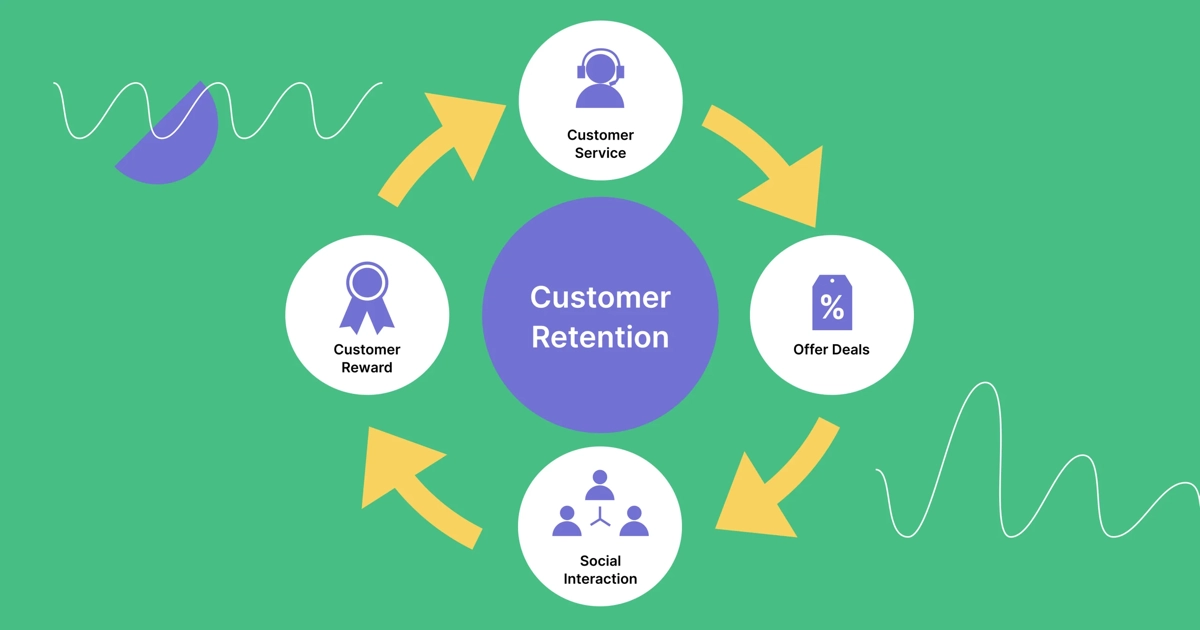
The core strengths of ABM for B2B customer acquisition lie in hyper–personalization, executive–level alignment, and enhanced ROI. B2B customer acquisition strategies often use account-based marketing, as ABM allows for a level of personalization that is unmatched in traditional marketing approaches. By thoroughly researching and understanding the specific challenges, priorities, and buying journey of each target account, you can craft messaging and content that directly addresses their needs. This fosters deeper engagement and positions your company as a solution perfectly aligned with their unique requirements.
ABM strategies often target high-level decision-makers within the target account. This necessitates aligning your marketing efforts with the company’s broader business goals and strategic objectives. By demonstrating a comprehensive understanding of their executive priorities, you establish valuable connections and build trust at the highest levels of influence. This strategy focuses resources on acquiring high-value customers. While the initial investment may be higher, the potential return is significant. By concentrating efforts on the most promising accounts, ABM can deliver a higher conversion rate, larger deal sizes, and, ultimately, a greater return on investment compared to broad-based marketing tactics.
7. Paid Advertising
The seventh best B2B customer acquisition strategy is paid advertising. This approach involves strategically allocating the budget to advertising platforms like Google Ads, Microsoft Advertising, LinkedIn Ads, or industry-specific publications. By leveraging paid advertising, B2B companies can amplify brand awareness, target high-intent audiences, and generate a steady stream of qualified leads.
Paid advertising platforms offer sophisticated targeting options that allow you to reach a highly specific audience with laser focus. By leveraging demographics, industry affiliation, job titles, and even online behavior, you can ensure your message reaches B2B decision-makers actively searching for solutions like yours. This maximizes the return on your advertising investment.
Paid advertising campaigns can be specifically designed to generate high-quality leads. By incorporating compelling calls to action and landing pages optimized for lead capture, you can incentivize potential customers to provide their contact information in exchange for valuable content, demos, or consultations. It allows you to build a targeted prospect list that your sales and marketing teams can nurture.
Yet, the secret of a successful PPC campaign lies in a well–structured, ad–relevant landing page. You should create a dedicated page for each campaign, ensuring it focuses on a single goal aligned with your ad message and directs users to leave their contact details at the conversion step.
For this purpose, leverage the power of the best landing page platform – Landingi. Create your landing page by choosing one from over 400 templates and customizing it using a user-friendly editor. The platform provides an advanced Form Builder, thanks to which you can add an effective lead-generation form to your page, making it a powerful tool aligned with your PPC B2B customer acquisition strategy.
PPC campaigns can be even more beneficial, significantly enhancing brand awareness within your target B2B market. Displaying targeted ads across various platforms increases visibility and positions your company as a thought leader within your industry, fostering brand recognition and establishing you as a key player in the minds of potential customers. Another significant advantage of paid advertising is the ability to measure its effectiveness with precision. Most platforms provide detailed analytics that tracks impressions, clicks, conversions, and return on investment (ROI). This allows you to refine your campaigns for optimal performance and maximize the impact of your advertising dollars.
What Are the Phases of a B2B Customer Acquisition Strategy?
A B2B customer acquisition strategy involves the 7 phases, including market research and targeting, lead generation, lead nurturing, sales conversion, onboarding and implementation, customer retention and upselling, and analysis integrated with optimization. Each phase is essential for attracting, engaging, and converting potential clients, as described below:
- Market research and targeting – in this initial phase, you conduct thorough market research to identify your ideal customer profile and target market segments. This includes analyzing industry trends, understanding customer pain points, and assessing competitive landscapes. By defining your target audience, you can tailor your acquisition strategies to meet their specific needs and preferences.
- Lead generation – this phase involves attracting potential customers through various channels, such as content marketing, SEO, PPC advertising, social media, and networking events. The goal is to generate interest and capture contact information, converting anonymous visitors into identifiable leads. Effective lead generation requires creating valuable content and compelling offers that resonate with your target audience.
- Lead nurturing – once leads are generated, the focus shifts to nurturing them through the sales funnel. This phase involves engaging with leads through personalized email campaigns, educational content, webinars, and follow-up communications. The objective is to build relationships, establish trust, and address any objections or questions the leads may have, guiding them toward a purchase decision.
- Sales conversion – in this phase, nurtured leads are handed over to the sales team for direct engagement. This phase includes personalized sales presentations, product demonstrations, proposals, and negotiations. The goal is to close the deal by addressing specific client needs and showcasing the value of your product or service. Effective sales strategies and techniques are crucial to converting leads into paying customers.
- Onboarding and implementation – after a sale, the focus shifts to onboarding and implementation. This phase ensures a smooth transition for the new customer, providing them with the necessary resources, training, and support to use your product or service effectively. A successful onboarding process enhances customer satisfaction and sets the stage for long-term engagement.
- Customer retention and upselling – retaining existing customers is as important as acquiring new ones. This phase involves maintaining regular communication, offering excellent customer support, and continually demonstrating value. Additionally, identifying opportunities for upselling and cross-selling can increase revenue and deepen customer relationships. Happy and loyal customers are likelier to provide referrals and become brand advocates.
- Analysis and optimization – the final phase involves analyzing the effectiveness of your customer acquisition strategy. This includes tracking key performance metrics, gathering customer feedback, and identifying improvement areas. Continuous optimization ensures that your strategies remain effective and adapt to changing market conditions and customer needs. Regularly reviewing and refining your approach helps maintain a competitive edge and drive sustained growth.
By systematically following these phases, you can create a comprehensive and effective B2B customer acquisition strategy that not only attracts new clients but also fosters long-term relationships and business growth.
What Are the Essential Factors for a Successful Customer Acquisition Strategy?
The essential factors that impact a successful customer acquisition strategy involve clear target audience definition, strong online presence, value proposition, multi-channel approach, high-quality content, effective lead generation and nurturing, data-driven decision-making, sales and marketing alignment, customer relationship management, and continuous adaptation. Learn how each of these factors helps in creating and conducting a successful customer acquisition strategy:
- Clear target audience definition – knowing who your ideal customers are allows you to tailor your marketing efforts and messages to resonate with them effectively. Identifying and understanding your target audience involves creating detailed buyer personas based on demographics, industry, company size, pain points, and buying behavior.
- Strong online presence – your online presence should reflect your brand’s credibility and expertise. A professional and user-friendly website or landing page is essential for a successful customer acquisition strategy. Ensure your web page is optimized for search engines (SEO), provides a seamless user experience (UX), and contains clear calls to action (CTAs).
- Value proposition – a compelling value proposition attracts potential customers by demonstrating the tangible value they will receive. Your UVP should clearly articulate your product or service’s unique benefits and solutions. It should address your target audience’s specific needs and challenges, highlighting what sets you apart from competitors.
- Multi-channel approach – a diversified approach ensures you meet potential customers where they are, maximizing your reach and impact. Leveraging multiple channels to reach your target audience increases your chances of engagement. This includes content marketing, social media, email marketing, SEO, PPC advertising, and offline methods like networking events and trade shows.
- High-quality content – high-quality content positions your brand as an industry authority and helps build trust with your audience. Providing valuable, relevant, and informative content (blog posts, white papers, case studies, videos, webinars, and infographics) is key to attracting and nurturing potential customers.
- Effective lead generation and nurturing – the goal is to move prospects from initial interest to readiness to purchase, so it requires implementing strategies to capture and nurture leads through the sales funnel. This involves creating compelling offers, using lead magnets, and employing lead nurturing tactics such as personalized email campaigns and targeted content.
- Data-driven decision-making – data analysis helps identify what’s working, what needs improvement, and where to allocate resources for maximum impact. You should utilize data and analytics to track the performance of your acquisition efforts. This involves monitoring key metrics such as website traffic, conversion rates, lead quality, and customer acquisition cost (CAC).
- Sales and marketing alignment – effective alignment enhances lead quality and improves the overall customer journey. Sales and marketing teams must work collaboratively towards common goals. This includes sharing insights, strategies, and feedback to create a cohesive approach to customer acquisition.
- Customer relationship management (CRM) – a CRM system helps streamline the sales process, track customer engagement, and provide valuable insights into customer behavior and preferences, enabling more personalized and effective marketing efforts.
- Continuous optimization and adaptation – continuous optimization ensures your strategy remains effective and competitive. This involves regularly reviewing and refining your customer acquisition strategy based on performance data and market feedback. Stay agile and adapt to changing market conditions, customer preferences, and emerging trends.
How Can B2B Customer Acquisition Benefit from Optimized Landing Pages?
Optimized landing pages play a crucial role in B2B customer acquisition by creating focused and effective entry points for potential clients. Dedicated landing pages, focused on singular goals, are considered one of the best lead-generation tools. They provide multiple advantages for B2B digital marketing, including enhanced targeting and relevance, improved user experience, minimized confusion, focused messaging, data collection and lead generation, personalization opportunities, better analytics, effective A/B testing, and alignment with marketing campaigns.
Each of these benefits, provided by optimized landing pages, contributes to effective B2B marketing strategies focused on customer acquisition, as follows:
- Enhanced targeting and relevance – optimized landing pages can be tailored to specific audience segments, ensuring that the content and offers resonate with the particular needs and pain points of those visitors. By addressing the unique challenges of different market segments, you can improve engagement and increase the likelihood of conversion.
- Improved user experience – an optimized landing page provides a seamless and intuitive user experience. Clear navigation, concise and compelling copy, and visually appealing design elements keep visitors engaged and guide them to take the desired action. A positive user experience reduces bounce rates and increases the chances of lead generation.
- Minimized confusion – effective landing pages feature strong and prominent CTAs that direct visitors to take specific actions, such as downloading a white paper, signing up for a webinar, or requesting a demo. Clear CTAs minimize confusion and provide a straightforward path for visitors to follow, leading to higher conversion rates.
- Focused messaging – unlike general website pages, landing pages focus on a single objective or offer. This focused approach eliminates distractions and keeps visitors’ attention on the primary message and goal. By focusing on one specific action, optimized landing pages drive higher engagement and conversion rates.
- Data collection and lead generation – landing pages are designed to capture visitor information through forms, such as contact details or survey responses. This data collection is essential for lead generation, allowing you to build a database of potential clients. Optimized forms, with minimal required fields and clear benefits for the visitor, increase the likelihood of form completion.
- Personalization opportunities – optimized landing pages can leverage personalization techniques to deliver customized experiences for visitors. Using dynamic content and personalization tokens, you can tailor the page’s content and offers based on the visitor’s industry, company size, or previous interactions with your brand. Personalization enhances the relevance and increases the conversion potential.
- Better analytics – with dedicated landing pages, you can more accurately track the performance of your marketing campaigns. Analyzing metrics such as traffic sources, conversion rates, and visitor behavior provides valuable insights into what works and what needs improvement. This data-driven approach enables continuous optimization of your landing pages and overall customer acquisition strategy.
- Effective A/B Testing – landing pages provide an ideal platform for A/B testing different elements, such as headlines, images, CTAs, and form fields. By experimenting with variations and analyzing the results, you can identify the most effective combinations that drive the highest conversions. Continuous testing and optimization help refine your landing pages for maximum impact.
- Alignment with marketing campaigns – optimized landing pages can be closely aligned with specific marketing campaigns, ensuring consistency in messaging and branding. Whether it’s a PPC ad, email marketing campaign, or social media promotion, landing pages that mirror the campaign’s tone and content enhance the overall user experience and increase conversion rates.
To fully leverage the potential of well-optimized landing pages in your B2B customer acquisition strategies, choose the best landing page platform – Landingi. It offers advanced tools for creating, testing, and optimizing landing pages, yet each feature is designed by experts to streamline digital marketing efforts. It means that Landingi provides a comprehensive toolkit invented not only to support marketing specialists’ work but also to enable beginners without extensive knowledge or experience to conduct successful campaigns based on landing pages. With landingi, lead generation strategies become more effective than ever before.
Once you decide to try Landingi, you can start the landing page creation process by choosing one of over 400 templates designed by professionals. Customization takes place in a user-friendly editor, where you can leverage advanced AI landing page features. Thanks to them, you can create engaging, ad-related content for the entire landing page in minutes, effortlessly edit visuals, and optimize your page for SEO. Landingi supports 29 languages, which allows you to reach your target audiences effortlessly, regardless of the region you aim for.
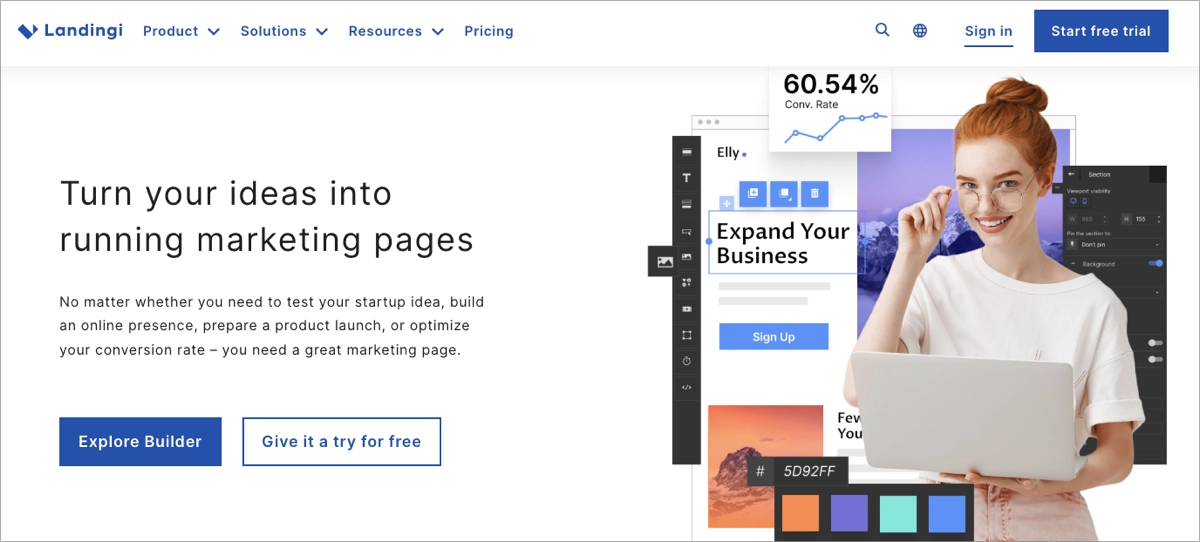
With the A/B testing tool, you can experiment with various page versions and find the one that resonates best with your target audience. In this process, leverage a built-in EventTracker tool to track events and user behavior. It collects all data in one Landingi Dashboard, making analytics effortless and allowing you to incorporate data-based optimizations. Landingi offers over 170 integrations, which makes it an indispensable platform in every marketer’s toolkit.
How Does B2B Customer Acquisition Benefit from B2B PPC?
B2B customer acquisition can benefit from B2B PPC advertising by providing targeted, measurable, and cost-effective ways to reach potential clients. Advantages of PPC strategies leveraged in B2B customer acquisition include precise targeting, immediate visibility and results, cost-effective budget management, enhanced brand awareness, measurable performance and analytics, retargeting capabilities, scalability, competitive advantage, and customized messaging and offers. All of these PPC benefits contribute to B2B customer acquisition success as follows:
- Precise targeting – B2B PPC campaigns allow you to target specific audiences based on demographics, job titles, industries, company sizes, and even specific interests and behaviors. This precision ensures that your ads are shown to the most relevant potential clients, increasing the likelihood of attracting high-quality leads.
- Immediate visibility and results – PPC campaigns can generate immediate visibility for your business on search engines and other advertising platforms. Unlike organic SEO efforts, which take time to yield results, PPC ads can start driving traffic to your landing pages as soon as they are launched. This quick turnaround is essential for time-sensitive campaigns or when immediate lead generation is needed.
- Cost-effective budget management – with PPC advertising, you have control over your budget and can set daily or monthly spending limits. You only pay when someone clicks on your ad, ensuring that your marketing dollars are spent on engaged users. This cost-effective approach allows for better budget management and ROI tracking.
- Enhanced brand awareness – even if users do not click on your ads, repeated exposure to your brand can build awareness and recognition over time. Consistent visibility in search results and on relevant websites reinforces your brand presence. It keeps your business top-of-mind for potential clients, making them more likely to consider you when they are ready to purchase.
- Measurable performance and analytics – PPC platforms provide detailed analytics and performance metrics, allowing you to track the effectiveness of your campaigns. Metrics such as click-through rates (CTR), conversion rates, cost per click (CPC), and return on ad spend (ROAS) provide insights into what is working and what needs adjustment. This data-driven approach enables continuous optimization and improvement of your campaigns.
- Retargeting capabilities – B2B PPC campaigns can include retargeting strategies to re-engage visitors who have previously interacted with your website or content but did not convert. Retargeting ads serve as reminders and encourage these potential clients to return and complete their actions, improving conversion rates and maximizing the value of your initial marketing efforts.
- Scalability – PPC campaigns are highly scalable, allowing you to increase or decrease your budget based on performance and business needs. As you see positive results, you can allocate more resources to your PPC efforts to drive even greater results. This flexibility ensures that your marketing efforts can grow alongside your business.
- Competitive advantage – in highly competitive B2B markets, PPC advertising can give you an edge by ensuring your business appears prominently in search results and on industry-specific websites. Being visible when potential clients are actively searching for solutions increases your chances of being considered over competitors who may rely solely on organic search.
- Customized messaging and offers – PPC ads can be tailored to deliver specific messages and offers to different audience segments. By creating customized ad copy and landing pages that address the unique needs and pain points of various buyer personas, you can improve relevance and engagement, leading to higher conversion rates.
B2B customer acquisition strategies may include targeted advertising to achieve targeted reach, immediate visibility, and detailed analytics. With B2B PPC advertising, businesses can effectively acquire new customers, build brand awareness, and achieve their marketing goals in a cost-efficient manner.
What Is the Best B2B SaaS Customer Acquisition Strategy?
The best B2B SaaS customer acquisition strategy is a multi–faceted approach that integrates targeted marketing, high–quality content, and personalized engagement. Unlike traditional marketing tactics that cast a wide net, B2B SaaS customer acquisition prioritizes precision. By leveraging data analytics and customer insights, companies can create targeted campaigns that resonate with specific buyer personas within their ideal customer profile (ICP). This ensures the message reaches the most relevant decision-makers, maximizing the return on investment for your marketing efforts.
The B2B buyer journey is no longer linear. Effective customer acquisition strategies utilize a multi-channel approach, engaging potential customers across various touchpoints. This could encompass email marketing campaigns, targeted social media advertising, participation in industry events, or strategic partnerships with complementary businesses.
Content serves a strategic purpose within the customer acquisition strategy. By creating a diverse content library catering to different stages of the buyer journey (awareness, consideration, decision), businesses can attract, educate, and nurture potential customers. This ultimately leads them to understand a SaaS offering and its value proposition. Creating high-quality content (e.g., white papers, blog posts, webinars, case studies) that addresses the specific challenges and pain points faced by the target audience positions the SaaS company as a trusted advisor and a valuable resource.
The most effective strategies prioritize building genuine relationships with potential customers. This involves personalized communication that demonstrates a deep understanding of their specific needs and challenges. Utilizing marketing automation tools to personalize email campaigns, offering free consultations with industry experts, or actively engaging in social media conversations fosters trust and positions your company as a dedicated partner in their success. The best B2B SaaS customer acquisition strategies are not static. By leveraging data analytics tools, companies can track campaign performance, measure customer engagement, and identify areas for improvement. This data-driven approach allows for continuous refinement of your marketing efforts, optimizing content creation, targeting strategies, and personalization tactics to maximize the effectiveness of your customer acquisition funnel.
By seamlessly integrating these core elements – targeted marketing, high-quality content, and personalized engagement – B2B SaaS companies can create a powerful customer acquisition strategy. This approach fosters brand awareness, attracts qualified leads, and, ultimately, drives sustainable business growth in the competitive SaaS marketplace.
Why Do B2B Companies Struggle with Client Acquisition Strategy?
B2B companies face several challenges when it comes to crafting and executing a successful client acquisition strategy, including complex decision-making, a highly competitive market, evolving buyer behavior, data and measurement challenges, internal alignment issues, and limited resources. These key reasons create deeper problems that negatively affect customer acquisition strategy, as follows:
- Complex decision-making – B2B purchases typically involve multiple stakeholders within a company, each with its own priorities and evaluation criteria. This makes the sales cycle long and requires a nuanced approach that addresses all decision-makers’ concerns.
- Highly competitive landscape – the B2B space is often crowded with competitors offering similar solutions. Standing out from the pack and effectively communicating your unique value proposition is crucial to securing new clients.
- Evolving buyer behavior – B2B buyers are increasingly tech-savvy and conduct thorough research online before engaging with a sales representative. Companies need to stay updated on buyer trends and adapt their acquisition strategies accordingly.
- Data and measurement challenges – accurately measuring the return on investment (ROI) for marketing and sales efforts can be difficult in B2B. Without clear data insights, it’s hard to know what’s working and what needs improvement in the acquisition strategy.
- Internal alignment issues – friction between marketing and sales teams can hinder a B2B company’s acquisition efforts. Miscommunication about lead qualification, nurturing strategies, and handoff processes can lead to missed opportunities.
- Limited resources – smaller B2B companies might struggle to dedicate sufficient resources (budget, personnel) to implement a comprehensive and data-driven acquisition strategy. This can limit their reach and effectiveness compared to larger competitors.
By understanding these challenges, B2B companies can proactively address them and develop a more robust client acquisition strategy that attracts high-quality leads and fosters long-term business growth.
Elevate Your B2B Customer Acquisition Strategy with Landingi
As you can see, there are numerous practices that can assist you in implementing a successful customer acquisition process in B2B. Nevertheless, once you execute them, always remember your target audience, as they are the final users of your activities. In the end – real and honest relationship building is the most essential in customer acquisition, and you should never forget about it.
No matter how great your strategy is, your efficiency is only going to be as good as the software you use. The better your arsenal, the more options you have to plan, execute and verify various actions. Each strategy requires different tools to optimize your efforts.
As far as lead generation is concerned, a well-crafted landing page can be instrumental in gathering more contacts for future nurturing, but… it needs to be built!
That’s where Landingi comes in. It’s an easy-to-use landing page builder that gives you creative freedom and customizability even if you don’t have any programming or design skills. Along with a set of additional tools and features like A/B testing, EventTracker, or AI landing page features, it’ll take your customer acquisition strategy to the next level.
Try Landingi now and watch your B2B customer acquisition strategy truly work!





